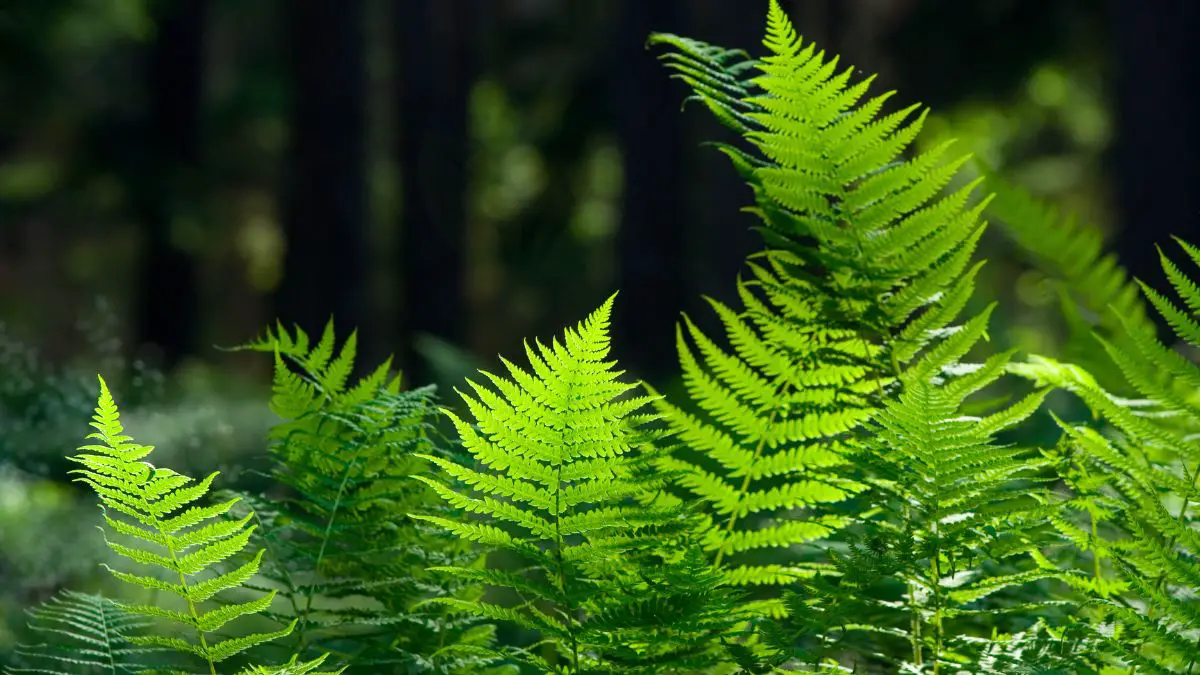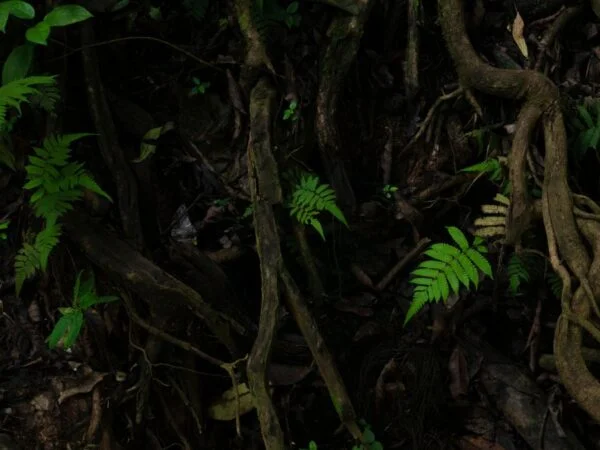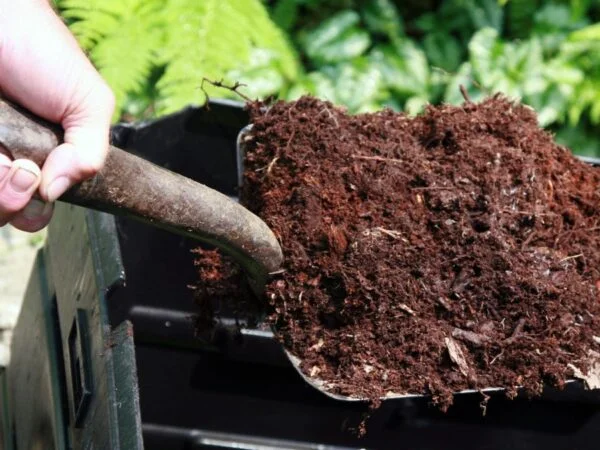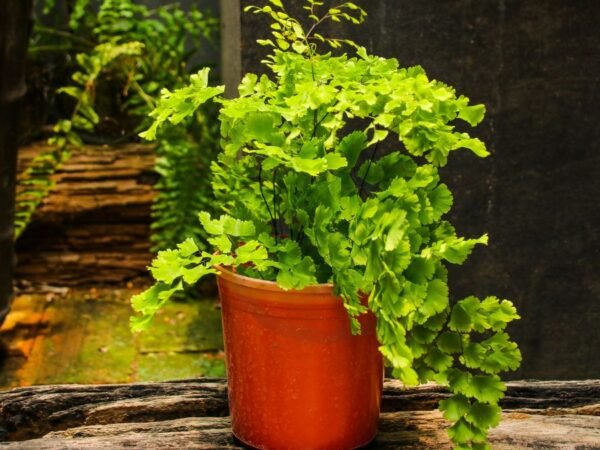Ever wondered what those beautiful, feathery leaves on ferns are called? You're not alone! This question comes up quite often. But fear not, fellow plant enthusiast, because I've got the answer you've been searching for.
Technically, the leaves of a fern aren't quite leaves at all. Instead, they're called fronds. This term is used specifically for ferns to distinguish them from the true leaves of flowering plants. Fronds can vary greatly in size and shape, from tiny and delicate to large and sprawling. They also come in a wide variety of colors, from the classic green to more unusual hues like red and purple.
But that's not all there is to know about fern fronds! There's a whole world of fascinating details to explore, from their unique structure to their role in reproduction. If you'd like to delve deeper into the amazing world of ferns, keep reading! We'll uncover the secrets of their growth patterns, the different types of fronds, and some fun facts about these prehistoric plants. Key Takeaways
- Understanding Ferns:
- Fern leaves are called fronds and play a vital role in the plant's life cycle.
- Leaf Structure:
- The structure of fern leaves consists of a blade, stipe, and rachis, each serving a specific function.
- Leaf Types:
- Fern leaves can vary in shape and size, with some species having simple leaves while others exhibit complex divisions.
- Unique Leaf Features:
- Fern leaves may have unique features like hairs, scales, or patterns that aid in identification and adaptation to different environments.
- Exploring Fiddleheads:
- Fiddleheads are young, coiled fern leaves that are harvested for culinary purposes and represent a stage in the fern's growth cycle.
- Fern Sori Deep Dive:
- Sori are clusters of spore-producing structures found on the underside of fern leaves, crucial for reproduction and dispersal.
Understanding Ferns
Structure Overview
Fronds, the leafy structures of ferns, are vital for their growth and reproduction. They consist of a blade, the expanded leaf, and a petiole, the stalk-like structure that supports the blade. Across various fern species, there is significant variation in the characteristics of these fronds.
Leaves Anatomy
A frond comprises the midrib, which acts as the central vein carrying nutrients throughout the leaf, and the apex, its tip. The terms pinnae, referring to primary leaflet divisions, pinna for secondary divisions, and pinnules for smaller leaflets attached to pinnae are essential in understanding fern leaves. Ferns exhibit a wide range of leaf shapes, sizes, and textures, adding to their aesthetic appeal.
Stems and Roots
Stems play a crucial role in supporting fronds and facilitating nutrient transportation within fern plants. They also aid in connecting leaves to the root system for optimal resource uptake. Roots are indispensable for ferns as they absorb water and minerals from the soil essential for their survival.
Leaf Structure
Rachis Details
The rachis in fern leaves serves as a central axis that connects the leaflets, providing structural support. It plays a crucial role in distributing nutrients and water throughout the leaf. The rachis also aids in maximizing sunlight exposure for photosynthesis.
Pinnae Insight
Pinnae are the smaller leaf-like structures that make up fern fronds. They play a vital role in increasing the surface area for efficient gas exchange and photosynthesis. The arrangement of pinnae varies across different fern species, contributing to their unique appearances.
- Arrangement of Pinnae:
- Pinnate: arranged on either side of the central rachis.
- Bipinnate: divided into smaller segments called pinnules.
Stipe Features
The stipe is the stalk-like structure that supports the blade (lamina) of a fern leaf. It provides stability and elevates the blade for better light absorption during photosynthesis. Variations in stipe length and thickness exist among fern species, influencing overall leaf morphology.
- Characteristics of Stipe:
- Tough and fibrous structure.
- Contains vascular tissues for nutrient transport.
Lamina Explained
The lamina, also known as the blade, is the broad, flat part of a fern leaf where photosynthesis primarily occurs. Its thin structure allows for efficient gas exchange and transpiration. The lamina contributes significantly to the overall health and growth of the frond.
- Importance of Lamina:
- Absorbs sunlight for photosynthesis.
- Facilitates water evaporation to maintain plant hydration.
Leaf Types
Simple Leaves
Simple leaves in ferns are undivided and have a single blade, unlike compound leaves that are divided into leaflets. Fern species like Maidenhair Fern and Brake Fern exhibit simple leaf structures. These leaves are characterized by their smooth edges and uniform appearance.
Pinnatifid Leaves
Pinnatifid leaves are deeply lobed with the lobes extending halfway towards the midrib. These leaves create an intricate and visually appealing look on fern fronds. The lobed appearance of pinnatifid leaves adds texture and interest to the overall foliage.
Pinnate Leaves
Pinnate leaves in ferns have a feather-like arrangement, with leaflets attached along a central axis called the rachis. The symmetry and division pattern of pinnate leaves give fern fronds an elegant and graceful appearance. Species like Boston Fern showcase the beauty of pinnate leaves in their foliage.
Further Divided
Further divided fern leaves undergo additional segmentation, resulting in increased leaf complexity. This process creates intricate patterns within the foliage, enhancing the overall visual appeal of fern plants. Examples include Hart's Tongue Fern, which displays elaborate patterns due to further leaf division.
Unique Leaf Features
Fiddleheads
Fiddleheads are young, coiled fern leaves that play a crucial role in the growth of ferns. They unfurl into mature fronds. Their distinctive spiral shape gives them a unique appearance, resembling the scroll end of a violin (hence the name). In the reproductive cycle of ferns, fiddleheads serve as the precursors to fully developed fronds, showcasing the plant's growth process.
Dimorphic Fronds
Fern Sori
Fern sori are clusters of spore-producing structures found on the underside of fern fronds. These structures are essential for fern reproduction by releasing spores for new plant growth. i are strategically located on fronds to maximize spore dispersal, aiding in the plant's reproduction cycle.
Exploring Fiddleheads
Growth Process
Fern leaves, known as fiddleheads in their early stage, undergo a fascinating growth process. Initially tightly coiled, fiddleheads gradually unfurl into delicate fronds. As they grow, these young shoots transform into the intricate and lush foliage characteristic of ferns. The development stages include the emergence of the curled tip, gradual elongation of the stem, and the eventual expansion into mature fronds. Factors such as sunlight exposure, moisture levels, and soil quality play crucial roles in influencing the growth of fern leaves.
Significance
The ecological significance of fern leaves lies in their ability to thrive in diverse environments, contributing to biodiversity by providing habitats for various organisms. Aesthetically, fern leaves add beauty to landscapes with their unique shapes and vibrant green hues. Beyond ecological importance, fern leaves hold cultural significance in many traditions worldwide. They symbolize resilience and endurance, often appearing in art, literature, and folklore as representations of growth and transformation within nature. In some cultures, fern leaves are even believed to bring good luck and prosperity.
Leaf Division Insights
Simple Characteristics
Fern leaves, known as fronds, display simple characteristics with undivided structures. These leaves are typically broad and feature a single leaflet. The simplicity of these leaves allows for efficient photosynthesis and nutrient absorption in fern plants. Examples of fern species with simple leaf characteristics include the Boston Fern and Maidenhair Fern.
Pinnatifid Description
Pinnatifid fern leaves exhibit lobed edges and a segmented structure, resembling a feather-like appearance. The lobes on these leaves are not fully divided but have deep incisions along the margins, adding an intricate touch to the overall look of the frond. Pinnatifid leaves contribute to the aesthetic appeal of fern fronds, enhancing their visual interest and beauty.
Pinnate Structure
The pinnate structure of fern leaves consists of multiple leaflets arranged symmetrically along a central axis. These leaflets are attached to a rachis, forming a feather-like pattern that is visually striking. The graceful appearance of pinnate fronds adds elegance to fern plants, making them popular choices for ornamental gardens and indoor spaces.
Further Division Types
Fern leaves can undergo further division, resulting in increased complexity through additional segmentation. This process leads to the creation of intricate patterns within the leaf structure, showcasing a wide variety of designs in different fern species. Further divided fern leaves offer unique visual interest and contribute to the overall diversity of foliage patterns in the plant kingdom.
Dimorphic Fronds
Unique Features
Fern leaves, also known as fronds, exhibit distinctive characteristics setting them apart from other plant species. One key feature is their vascular system, allowing efficient water and nutrient transportation. Fern leaves possess a unique reproduction method called spore production.
These evolutionary adaptations enable fern leaves to thrive in diverse environments. Their ability to grow in shady, moist areas makes them ideal for forest floors. Furthermore, fern leaves have developed a waxy coating that helps prevent water loss in arid conditions.
Fern Sori Deep Dive
Structure and Function
Fern leaves, also known as fronds, have a unique structure that directly impacts their function. The fronds consist of leaflets attached to a central stem called a rachis. This structural design allows for maximum exposure to sunlight for photosynthesis. The underside of the fronds contains clusters of structures called sori, which are essential for reproduction.
The sori are small, round structures that house spores necessary for fern reproduction. These structures play a crucial role in dispersing spores to propagate new fern plants. The leaf anatomy of ferns supports efficient photosynthesis by maximizing surface area exposed to light. The vascular system within the fronds aids in nutrient absorption and transportation throughout the plant.
- Efficient photosynthesis due to maximum sunlight exposure
- Vascular system facilitates nutrient absorption
- Sori essential for fern reproduction through spore dispersal
Fern Reproduction Overview
Sporangia Role
Sporangia play a crucial role in fern reproduction by producing and dispersing spores. These spores are essential for the continuation of the fern life cycle. The sporangia are typically found clustered in structures called sori on the underside of fern leaves.
The production of spores by sporangia involves a process known as meiosis, where specialized cells divide to form haploid spores. Once mature, these spores are released into the environment to germinate and develop into new fern plants. Sporangia ensure the dispersal of spores, allowing for genetic diversity and successful reproduction among ferns.
The importance of sporangia in the fern life cycle cannot be overstated. They serve as the primary means of reproductive propagation for ferns, enabling them to colonize new habitats and thrive in diverse environments. Without sporangia and the spores they produce, ferns would struggle to reproduce and perpetuate their species effectively.
Summary
Understanding the intricate world of fern leaves, including their structure, types, unique features, fiddleheads, division insights, dimorphic fronds, sori details, and reproduction overview has shed light on the fascinating aspects of these plants. By exploring the various facets of fern leaves, you've gained a deeper appreciation for their complexity and beauty in nature. Remember, the next time you encounter a fern leaf, take a moment to marvel at its remarkable characteristics and the wonders it holds within its structure.
ext time you're out in nature or even browsing through botanical illustrations, keep an eye out for fern leaves and recall the diverse information you've gathered. Share your newfound knowledge with others to spread awareness about these incredible plants and continue discovering the secrets hidden within fern leaves. Embrace your curiosity and delve deeper into the world of ferns—it's a journey full of surprises and wonders waiting to be explored.
Frequently Asked Questions
What are the different types of fern leaves?
Fern leaves can be classified into various types based on their structures and shapes. The common types include simple leaves, compound leaves, fronds, and fiddleheads.
How do fern leaves contribute to the plant's growth?
Fern leaves play a crucial role in photosynthesis, enabling the plant to produce energy from sunlight. They aid in transpiration, helping regulate moisture levels within the plant.
What is the significance of dimorphic fronds in ferns?
Dimorphic fronds in ferns serve different functions: sterile fronds are responsible for photosynthesis and nutrient storage, while fertile fronds produce spores for reproduction.
What are fern sori and their importance?
Fern sori are clusters of spore-producing structures found on the underside of fronds. They are vital for fern reproduction as they release spores that develop into new plants.
How do fern leaves adapt to their environment?
Fern leaves have evolved unique features like waxy coatings and hairs to retain moisture in diverse habitats. Some species have specialized leaf structures to thrive in specific light conditions or soil types.
Image Source: Paid image from CANVA





